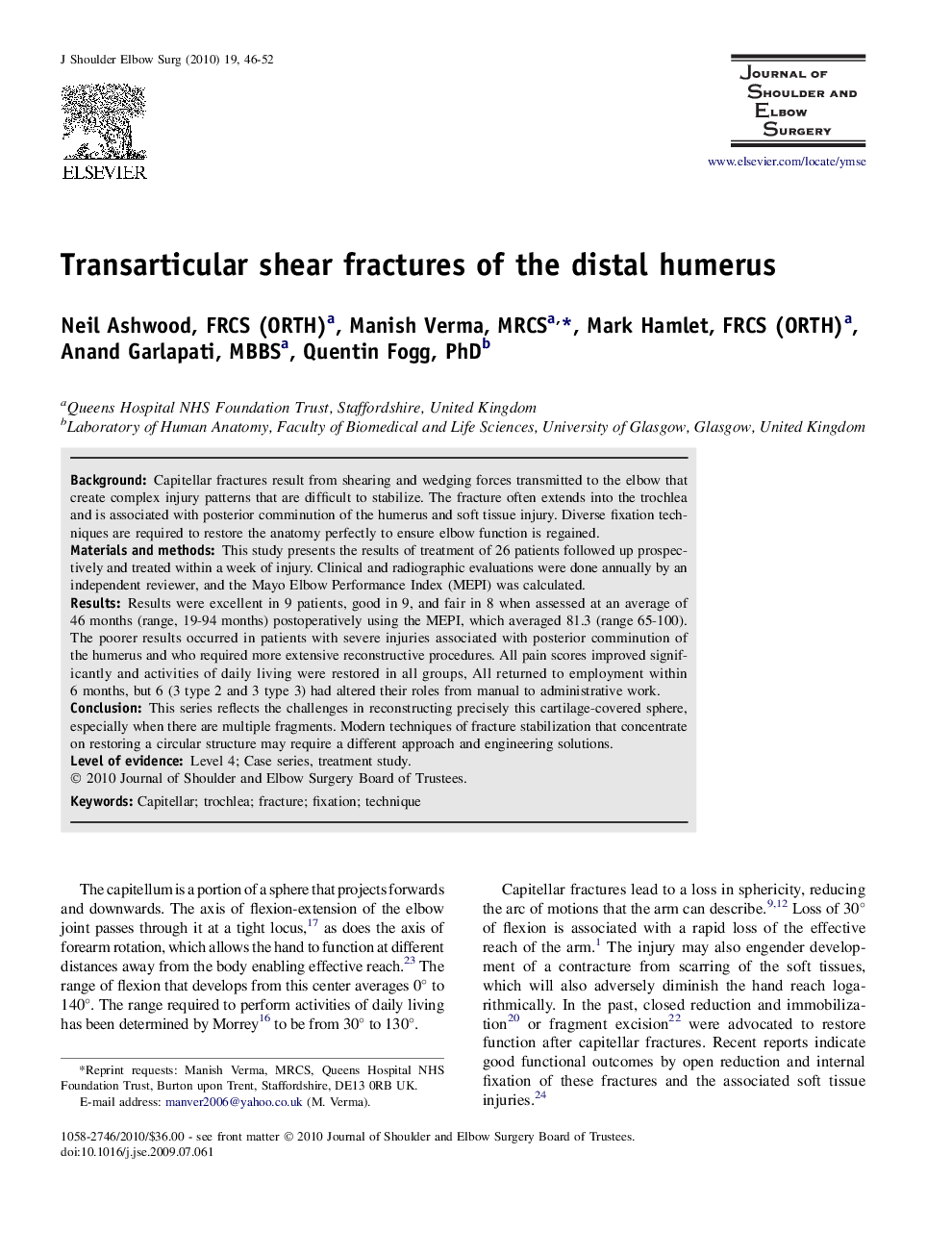| Article ID | Journal | Published Year | Pages | File Type |
|---|---|---|---|---|
| 4076171 | Journal of Shoulder and Elbow Surgery | 2010 | 7 Pages |
BackgroundCapitellar fractures result from shearing and wedging forces transmitted to the elbow that create complex injury patterns that are difficult to stabilize. The fracture often extends into the trochlea and is associated with posterior comminution of the humerus and soft tissue injury. Diverse fixation techniques are required to restore the anatomy perfectly to ensure elbow function is regained.Materials and methodsThis study presents the results of treatment of 26 patients followed up prospectively and treated within a week of injury. Clinical and radiographic evaluations were done annually by an independent reviewer, and the Mayo Elbow Performance Index (MEPI) was calculated.ResultsResults were excellent in 9 patients, good in 9, and fair in 8 when assessed at an average of 46 months (range, 19-94 months) postoperatively using the MEPI, which averaged 81.3 (range 65-100). The poorer results occurred in patients with severe injuries associated with posterior comminution of the humerus and who required more extensive reconstructive procedures. All pain scores improved significantly and activities of daily living were restored in all groups, All returned to employment within 6 months, but 6 (3 type 2 and 3 type 3) had altered their roles from manual to administrative work.ConclusionThis series reflects the challenges in reconstructing precisely this cartilage-covered sphere, especially when there are multiple fragments. Modern techniques of fracture stabilization that concentrate on restoring a circular structure may require a different approach and engineering solutions.Level of evidenceLevel 4; Case series, treatment study.
